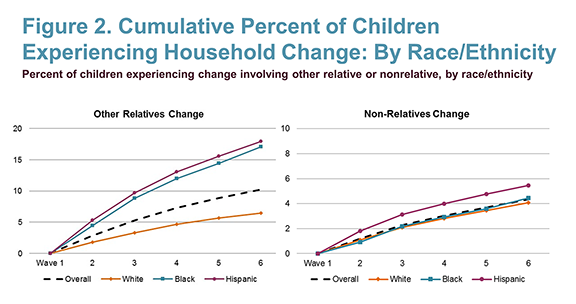Family Instability… It’s Not Just Mom and Dad
Children experience many changes in their households while they are growing up. But while we often think about divorcing and remarrying parents as common changes in household composition that affect many children, in new research, I show that changes involving extended family members and nonrelatives are far more common than changes involving a parent. This finding is significant because prior research suggests that it is likely that instability involving nonparental household members affects children’s outcomes. It is therefore relevant to assess the extent to which children are exposed to these transitions and how exposure varies by race and family structure.
To gauge the extent of household changes, I used the nationally representative Survey of Income and Program Participation (SIPP) to track a sample of more than 72,000 children and their households over approximately two years. The SIPP interviews households every four months and documents the set of household members at each interview. This allowed me to identify the relationship between each child and each other household member and to determine who exited or entered the households between interviews.
Overall, by the end of two years (after six interviews), about one percent of children experienced a change in household composition involving their mother and five percent experience a change involving their father. In contrast, more than 10 percent experienced a change involving a grandparent, aunt, uncle, cousin, or other extended family member. In addition, more than four percent of children experienced a change involving a nonrelative. This means that if we think only about divorcing and remarrying parents, we miss changes that affect 14 percent of children over a period of about two years.
These rates vary significantly by type of household, by race, and by ethnicity. For example, 18 percent of children living with a single parent and 29 percent of children living with no parents had an extended family member enter or exit their households compared to only seven percent of children who live with two parents. Similarly, over 10 percent of children living with a single parent or no parent experienced a change involving a nonrelative compared to two percent of children living with two parents (Figure 1).



